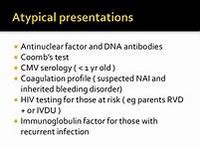
OSTEOPOROSIS
FOODS THAT HARM
FOODS THAT HEAL
FOODS TO LIMIT
WHO’S AFFECTED
4 million Canadians
Throughout life, our bones are in a state of constant renewal, called remodeling
While some bone cells are breaking down and being reabsorbed, others are forming to take their place
When reabsorbing occurs faster than formation, the bones become weak and extremely porous
Fractures can occur with little or no pressure
This condition is called osteoporosis
Lack of estrogen appears to be its key contributing factor, but a falling off of androgens—the male hormones—is also involved, coupled with an inadequate intake of calcium and vitamin D
Nutrition Connection
Consume enough calciumThe recommendation for calcium is 1,000 mg per day for men up to 70, and 1,200 mg per day for women older than 50 and men older than 70
Foods especially rich in calcium include milk and dairy products, fortified soy and rice beverages, dried beans and peas, tofu, canned fish eaten with the bones, nuts, and dark green leafy vegetables
The darker the greens, the more calcium they contain
An exception is spinach; it is high in oxalic acid, which inhibits calcium absorption
Don’t forget vitamin D
Just as important as calcium is vitamin D; the body needs it in order to absorb calcium
The RDA for adults up to 70 years old is 600 IU (15 mcg) and for those older than 70, 800 IU (20 mcg)
The main source of vitamin D is sunlight—try to get about 10 minutes a day— but it can also be obtained from milk, fortified soy and rice beverages, egg yolks and fatty fish like mackeral
If your doctor recomments a calcium supplement, look for calcium citrate, the most easily absorbed
Because vitamin D is found in so few foods, a supplement is likely advisable
Go green for vitamin K
Both the Nurses’ Health Study and the Framingham Heart Study found that people who consume the most vitamin K have a lower risk of hip fractures than those who consume less
Vitamin K can be found in leafy green vegetables, green peas, broccoli, brussels sprouts, cabbage, kale, and beef liver
Slip in some soy
Studies suggest that soy may play a role in prevention of osteoporosis as it contains isoflavones, a type of plant estrogen that may help conserve bone mass, particularly during perimenopause and menopause
Add flaxseed
A study of postmenopausal women suggests that flaxseed, which is high in lignans, may retain bone mass, elevate antioxidant status, and help prevent urinary loss of calcium
50% of all women older than 50 will break a bone because of osteoporosis
Don’t forget vitamin C
Studies have linked higher intakes of vitamin C with higher bone density
Vitamin C also helps to form the connective tissue that holds bones together
Some of the best food sources are fruits and vegetables, especially citrus fruits, berries, melons, and peppers
Avoid bone-zapping foods
Caffeinated drinks such as coffee, tea, or colas; sodium; and high levels of protein can all cause calcium to be excreted
Beyond the Diet
Other changes can strengthen bones and help you monitor your risk for osteoporosisHere are a few guidelines: Get regular weight-bearing exercise
Walking, jogging, aerobics, tennis, and dancing are all excellent for helping to maintain bones
Shoot for at least 30 minutes a day
Seek scans
Many doctors recommend a baseline bone density scan for women when menstrual periods become irregular
Watch medications that can affect the levels of calcium in the body
Antacids containing aluminum can promote calcium excretion
Calcium is also lost during long-term use of other drugs, including certain antibiotics, diuretics, and steroids
Importance of well balance diet




